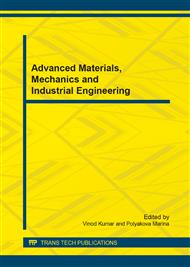p.714
p.718
p.723
p.731
p.736
p.743
p.747
p.753
p.758
Firefighting Tactics during a Fire Event at a Nightclub
Abstract:
Entertainment centers are typically equipped with flammable materials. In addition, consumers (and employees) of these establishments are relatively unfamiliar with their internal environments, escape routes, and fire safety equipment. Therefore, fire hazards often result in severe casualties and property loss. In this study, Fire Dynamics Simulator was used to simulate a severe nightclub fire recently occurred in Taiwan. Data were collected from field observations and media reports to establish a numerical model for the actual fire. Important fire dynamic parameters such as temperature distribution, smoke diffusion and carbon monoxides concentration were computed using the model. The results of this analysis can be used to formulate/analyze the firefighting and rescue tactics for similar fires, which would decrease the risk of disaster occurrence and increase rescue efficiency, thereby reducing casualties and property loss.
Info:
Periodical:
Pages:
758-765
Citation:
Online since:
July 2014
Authors:
Price:
Сopyright:
© 2014 Trans Tech Publications Ltd. All Rights Reserved
Share:
Citation:


